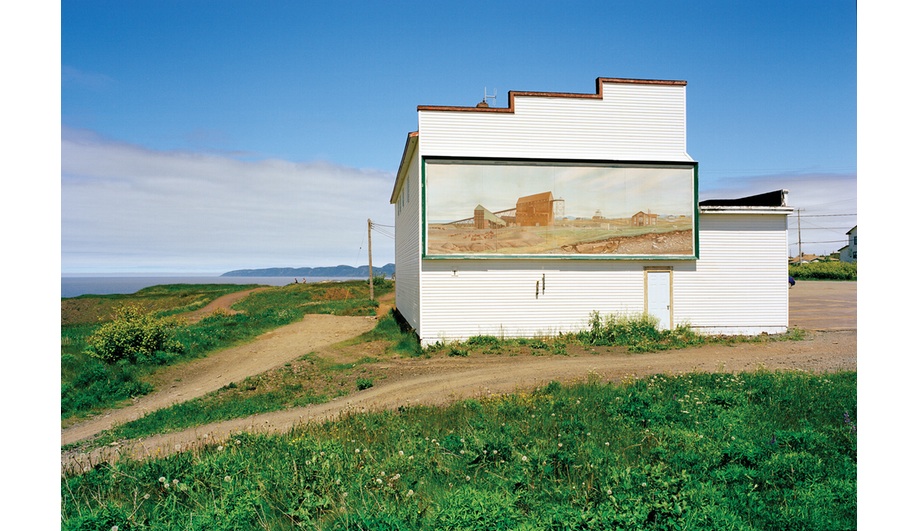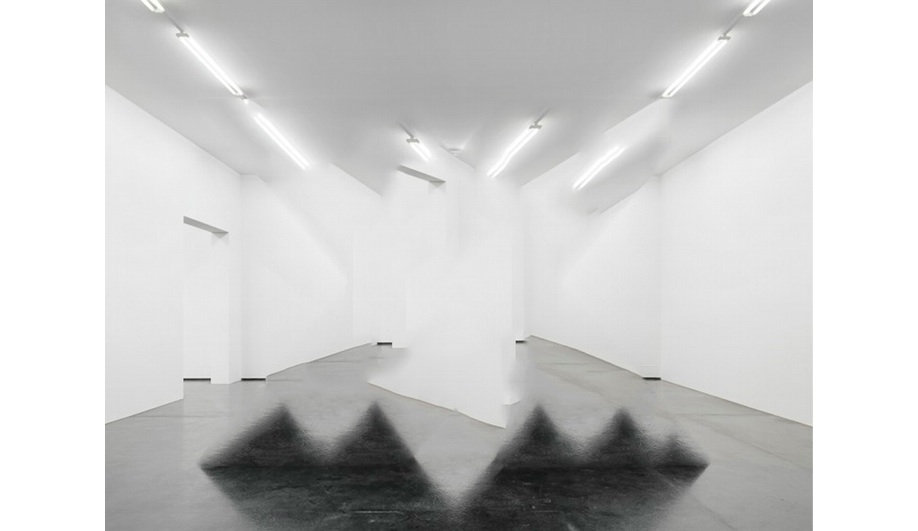
Featured among them, these 10 photo-based projects from around the world that examine our relationship with the built environment are ones that every architecture and design lover should know about.

1 False Fronts by Steve Payne
The Prefix Institute hosts this solo show by Newfoundland’s Steve Payne, which explores the Canadian province’s vernacular architecture. It gives particular attention to the “western facades” of Newfoundland’s boom-era mercantile buildings, and the ornamental structures designed to help these rapidly erected boxes create the illusion of a larger, more impressive building.

2 The Entire City Project by Michael Awad
Michael Awad’s decade-long aim of capturing every structure in his hometown of Toronto is ambitious to say the least – demanding not only Herculean patience, but also the invention of a unique hybrid camera capable of recording extremely long panoramic images. For his installation at the Royal Ontario Museum, Awad presents the museum itself, in a life-sized band of imagery that depicts a long walk through the ROM’s many galleries.

3 Aware by David Hanes
Starting with an online search for works of art, David Hanes collects images of existing contemporary galleries – the infamous “white cubes” – then digitally manipulates them into collages to remove all traces of the art they were intended to capture. The results are distorted, disorienting portrayals of spaces that don’t quite exist. Aware is on view at the Birch Contemporary.

4 Hamilton by Joseph Hartman
Stephen Bulger Gallery offers this glimpse of life not too far from home. Joseph Hartman’s series of images for Hamilton were snapped over a seven-year period in the eponymous Ontario town, capturing factories, residential areas and landscapes – a total of 40 images that convey a sense of suburban-industrial life and the “gritty personality” of the town’s east end.

5 Libraria: The Evolution of Literary Spaces by Elaine Chan-Dow
Over the centuries, the library has changed from a place where books are made to one where they are merely stored and read, and finally to a hub of community involvement and outreach. This exhibit, installed at IX Gallery, features Elaine Chan-Dow’s large-scale portraits of library interiors from across North America, depicting various design philosophies and styles.

6 Prairie and Pavement by Ian Brown
No look at urban photography would be complete without some ruin porn, and today’s locale of choice is Detroit. Ian Brown’s photographs of Detroit’s emptied streets and abandoned storefronts approach the subject with a sensitivity to the city’s history, showing the economic and social effects of depopulation on a broader scope than dilapidated buildings might suggest on their own. This exhibit is presented against the complementary backdrop of the Evergreen Brick Works’ kilns.

7 Retail Compositions by Owen Kydd
Owen Kydd’s colourful compositions, on view at Brookfield Place, take the styled storefront windows seen along Los Angeles’s Pico Boulevard as their point of departure. Kydd reimagines these displays in his studio as abstracted compositions, deliberately signifying the iconography of commerce while stripping it of function. Kydd dubs the results “durational photographs:” presented using video, what at first appears to be a static image actually changes slightly over time.

8 The Sochi Project: An Atlas of War and Tourism in the Caucasus by Rob Hornstra and Arnold van Bruggen
Years before Putin’s Olympics put Sochi on the map, photographer Rob Hornstra and journalist Arnold van Bruggen were exploring the Russian resort town’s people and places for The Sochi Project. The result of their travels is an arching narrative of a particular place, presented through books, videos, texts, a website, and photographs, which together show many facets of the city overlooked during the Olympic rush. The large-scale photos are presented at Contact’s head office.

9 Berlin Tut Gut by Stephen McNeill
“Berlin is good for you,” this exhibit’s title suggests. On view by appointment at Grenadier Road Studio, Stephen McNeill’s black and white images evoke the close ties between place and politics; his shots reveal how over the years spanning 1988 to 2000, the remnants of the Berlin Wall slowly crumbled, while the cultural effects of Nazism and the Cold War continued to change and decay as well, unveiling a new Berlin straining to be reborn.

10 Ruins of Toronto by Adam Taylor
Adam Taylor’s exhibit at The Brockton Haunt brings Toronto’s forgotten architecture back to mind. But unlike the ruins of Detroit, these are the result of Toronto’s rapid development, not de-industrialization. These fragments of bygone eras evoke delicate liminal spaces, captured on film in the moments before their inevitable replacement by yet another condo development.
The Scotiabank Contact Photography Festival runs throughout the month of May in venues across Toronto. Please visit the official Contact website for details.
